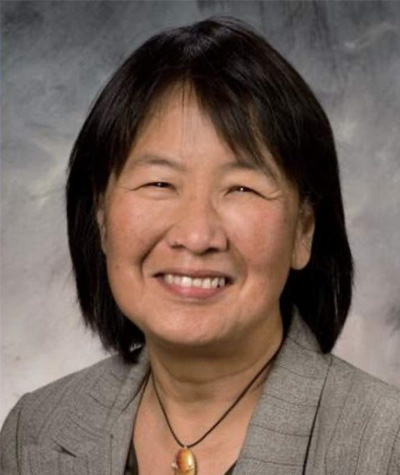
Evelyn Hu
Dr. Evelyn Hu is the Harvard School of Engineering and Applied Sciences Tarr-Coyne Professor of Applied Physics and of Electrical Engineering. She is also a co-Director of the Harvard Quantum Initiative.
Evelyn Hu’s research matches nanofabrication techniques with the integration of materials that allow the formation of structures and devices that demonstrate exceptional electronic and photonic behavior. This behavior can give rise to efficient, controlled and often coherent output of devices. One example of this is the focus on coupling artificial atoms, such as quantum dots or color centers in diamond, to carefully-crafted nanoscale optical cavities. Hu received Ph.D. and Master’s degrees in Physics from Columbia University and a B.A. in Physics from Barnard College.
Prior to her appointment at Harvard, she was Scientific Co-Director, California Nanosystems Institute and a Professor in the Departments of Electrical and Computer Engineering and Materials at the University of California, Santa Barbara. She also worked at AT&T Bell Laboratories, developing microfabrication and nanofabrication techniques for high performance superconducting and semiconducting devices and circuits. Hu is a member of the National Academy of Sciences, National Academy of Engineering, American Academy of Arts and Sciences, the Academica Sinica of Taiwan, and a Fellow of the IEEE, APS, and the AAAS. She is recipient of the 2019 Eringen Award, the 2020 Andrew Grove Award and the 2021 IEEE/RSE James Clerk Maxwell Award. She holds honorary degrees from the University of Glasgow, Heriot Watt University, the Hong Kong University of Science and Technology, Notre Dame University, ETH Zurich, and the City University of Hong Kong.
“Exploring new possibilities of optical and electronic behavior within materials that have been carefully sculpted, modulated and modified at the nanoscale. Creating low-damage and selective processes to provide highest quality & performance structures. Utilizing a semiconductor base platform, but also developing means of heterogeneous materials integration, including the use of bio-templating. Probing and pushing the performance of photonic and electronic structures.
My research explores the new possibilities of optical and electronic behavior within materials that have been carefully sculpted, modulated and modified at the nanoscale. Primarily starting with a semiconductor platform, careful control and understanding of interfaces can give rise to dramatically different materials and device opportunities, such as in wafer-bonded structures, or in semiconductor-superconductor structures.
High resolution fabrication processes, such as e-beam lithography and gas-phase etching can create a top-down modulation of optical or electronic properties with dramatic consequences. Such processes need to incorporate and leverage detailed understanding of the material to achieve the best outcomes. This has guided our work on low-damage etch processes and selective photo-electrochemical etching of GaN-based materials. The combined palette of heterogeneous materials and fabrication tools at the nanoscale offer the opportunity to highlight photonic and electronic performance and create devices of enhanced efficiency, speed and performance.”